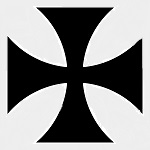Wings of the Great War WW11004 German Pfalz D.IIIa Biplane Fighter - Carl Degelow, Jasta 7, March 1918 (1:72 Scale)
"The important thing in aeroplanes is that they shall be speedy."
- Baron Manfred Von Richthofen
 The Pfalz D.III was a fighter aircraft used by the Luftstreitkrfte (Imperial German Air Service) during the First World War. The D.III was the first major original design from Pfalz Flugzeugwerke. Though generally considered inferior to contemporary Albatros and Fokker fighters, the D.III was widely used by the Jagdstaffeln from the fall of 1917 through the summer of 1918. It continued to serve as a training aircraft until the end of the war.
The Pfalz D.III was a fighter aircraft used by the Luftstreitkrfte (Imperial German Air Service) during the First World War. The D.III was the first major original design from Pfalz Flugzeugwerke. Though generally considered inferior to contemporary Albatros and Fokker fighters, the D.III was widely used by the Jagdstaffeln from the fall of 1917 through the summer of 1918. It continued to serve as a training aircraft until the end of the war.
Prior to World War I, Pfalz Flugzeugwerke produced Morane-Saulnier monoplane designs under license. These aircraft entered military service as the Pfalz A- and E-series. In September 1916, Pfalz began producing the first of 20 Roland D.I and 200 Roland D.II fighters under license.
In November 1916, Pfalz hired Rudolph Gehringer from Flugzeugbau Friedrichshafen GmbH. As Pfalzs new chief engineer, Gehringer immediately commenced work on an original fighter design. The resulting D.III emerged in April 1917. Like the Rolands, the D.III used a plywood monocoque fuselage. Two layers of thin plywood strips were placed over a mold to form one half of a fuselage shell. The fuselage halves were then glued together, covered with a layer of fabric, and doped. This Wickelrumpf method gave the fuselage great strength, light weight, and smooth contours compared to conventional construction techniques. However, it also proved to be more labor intensive and expensive. Furthermore, the D.III fuselage was prone to twisting or warping from side to side as it aged, a defect variously attributed to the use of insufficiently seasoned wood or to moisture absorption in damp conditions.
The wings were of conventional construction, with a flush Teves und Braun radiator offset to the right side of the upper wing. The ailerons were of wooden construction, rather than the more conventional steel tube construction. The horizontal stabilizer had an inverted airfoil section, which facilitated dive recovery and permitted the use of an unbalanced elevator.
The Idflieg found the prototype promising. It directed Pfalz to halt production of the Roland D.III and to complete the balance of the contract, 70 aircraft, to the new design. After a Typenprfung (type test) at Adlershof in May, the Idflieg ordered various modifications, including an enlarged rudder and horn-balanced ailerons. In June 1917, Pfalz received a second order for 300 aircraft
Pictured here is a 1:72 scale replica of a German Pfalz D.IIIa biplane fighter that was piloted by Carl Degelow who was attached to Jasta 7 during March 1918.
Sold Out!
Dimensions:
Length: 4-inches
Wingspan: 5-inches
Release Date: March 2022
Historical Account: "Charly" - Carl "Charly" Degelow (January 5th, 1891 - November 9th, 1970) Pour le Merite, Royal House Order of Hohenzollern, Iron Cross, was a German fighter pilot during World War I. He was credited with 30 victories, and was the last person to win the military Pour le Merite.
On January 25th, 1918, he finally was credited with his second victory, after four unconfirmed claims. On March 23rd, while landing in a 30 kilometer per hour (19 mph) wind, he destroyed his aircraft by upsetting upon landing but was unhurt. The photo of his inverted aircraft shows he sported a running stag insignia on his plane.
His third confirmed victory did not come until April 21st, 1918. He scored his fourth victory and transferred on May 16th, 1918, to the Royal Saxon Jagdstaffel 40. Degelow became the squadron's commanding officer on July 11th, 1918, after Helmut Dilthey was killed. During this time, he also flew a borrowed Fokker Dr.1 Triplane, though he doesn't seem to have claimed any successes with it.
He became an ace on June 18th, with the first of his two June victories. On the 25th, he took his new Fokker D.VII on a test flight, came upon a dogfight between D. VIIs of another Jasta and Sopwith Camels, and shot one of the Camels down. The D.VII remained his mount for the remainder of the war. His had the front three-quarters of the fuselage painted black; the rear quarter was white. Emblazoned on the side was a white running stag with gold antlers and hooves, its head pointed toward the propeller.
In July, he scored six times. On August 9th, he was awarded the Knight's Cross with Swords of the Royal House Order of Hohenzollern. In September, he again scored six times. October saw ten victories on ten different days. The victory on the 4th was over a Canadian naval ace, Captain John Greene of No. 213 Squadron. Degelow scored once more, on November 4th, just before the end of his and Germany's war. Thus credited with 30 confirmed victories and four unconfirmed, he was the last German pilot and final German serviceman to be awarded the Blue Max, on November 9th, 1918, the day the Kaiser abdicated, and two days before the end of the war. The abdication ended Imperial decrees and orders such as awards for the "Blue Max". Degelow also received the Iron Cross, 1st and 2nd class.


